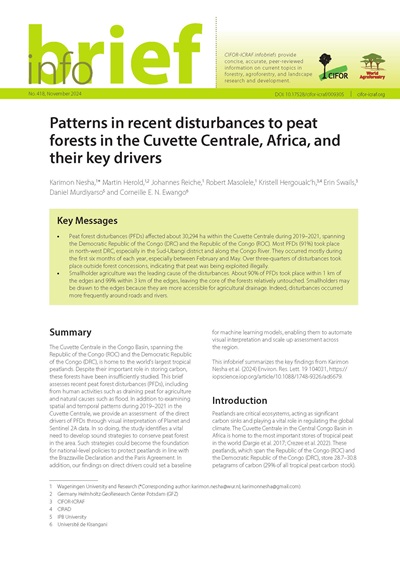Key Messages
- Peat forest disturbances (PFDs) affected about 30,294 ha within the Cuvette Centrale during 2019–2021, spanning the Democratic Republic of the Congo (DRC) and the Republic of the Congo (ROC). Most PFDs (91%) took place in north-west DRC, especially in the Sud-Ubangi district and along the Congo River. They occurred mostly during the first six months of each year, especially between February and May. Over three-quarters of disturbances took place outside forest concessions, indicating that peat was being exploited illegally.
- Smallholder agriculture was the leading cause of the disturbances. About 90% of PFDs took place within 1 km of the edges and 99% within 3 km of the edges, leaving the core of the forests relatively untouched. Smallholders may be drawn to the edges because they are more accessible for agricultural drainage. Indeed, disturbances occurred more frequently around roads and rivers.
Download:
DOI:
https://doi.org/10.17528/cifor-icraf/009305Pontuação Altmetric:
Dimensões Contagem de citações:
Ano de publicação
2024
Autores
Nesha, K.; Herold, M.; Reiche, J.; Masolele, R.; Hergoualc'h, K.; Swails, E.
Idioma
English
Palavras-chave
peat, peatlands, forests, small scale farming, agricultural land, disturbance
Geográfico
Republic of the Congo, Democratic Republic of the Congo


















